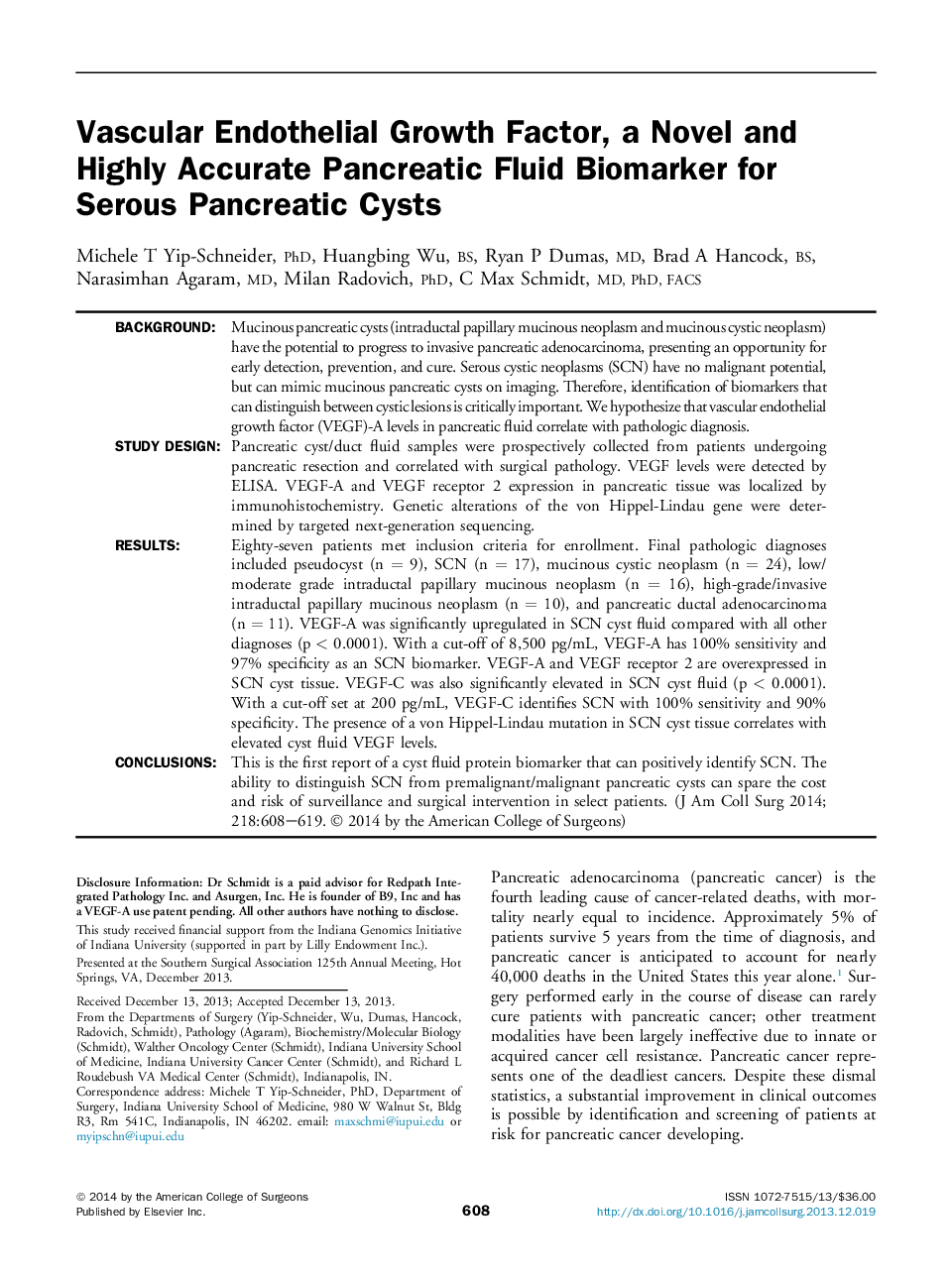| Article ID | Journal | Published Year | Pages | File Type |
|---|---|---|---|---|
| 4292161 | Journal of the American College of Surgeons | 2014 | 10 Pages |
BackgroundMucinous pancreatic cysts (intraductal papillary mucinous neoplasm and mucinous cystic neoplasm) have the potential to progress to invasive pancreatic adenocarcinoma, presenting an opportunity for early detection, prevention, and cure. Serous cystic neoplasms (SCN) have no malignant potential, but can mimic mucinous pancreatic cysts on imaging. Therefore, identification of biomarkers that can distinguish between cystic lesions is critically important. We hypothesize that vascular endothelial growth factor (VEGF)-A levels in pancreatic fluid correlate with pathologic diagnosis.Study DesignPancreatic cyst/duct fluid samples were prospectively collected from patients undergoing pancreatic resection and correlated with surgical pathology. VEGF levels were detected by ELISA. VEGF-A and VEGF receptor 2 expression in pancreatic tissue was localized by immunohistochemistry. Genetic alterations of the von Hippel-Lindau gene were determined by targeted next-generation sequencing.ResultsEighty-seven patients met inclusion criteria for enrollment. Final pathologic diagnoses included pseudocyst (n = 9), SCN (n = 17), mucinous cystic neoplasm (n = 24), low/moderate grade intraductal papillary mucinous neoplasm (n = 16), high-grade/invasive intraductal papillary mucinous neoplasm (n = 10), and pancreatic ductal adenocarcinoma (n = 11). VEGF-A was significantly upregulated in SCN cyst fluid compared with all other diagnoses (p < 0.0001). With a cut-off of 8,500 pg/mL, VEGF-A has 100% sensitivity and 97% specificity as an SCN biomarker. VEGF-A and VEGF receptor 2 are overexpressed in SCN cyst tissue. VEGF-C was also significantly elevated in SCN cyst fluid (p < 0.0001). With a cut-off set at 200 pg/mL, VEGF-C identifies SCN with 100% sensitivity and 90% specificity. The presence of a von Hippel-Lindau mutation in SCN cyst tissue correlates with elevated cyst fluid VEGF levels.ConclusionsThis is the first report of a cyst fluid protein biomarker that can positively identify SCN. The ability to distinguish SCN from premalignant/malignant pancreatic cysts can spare the cost and risk of surveillance and surgical intervention in select patients.
